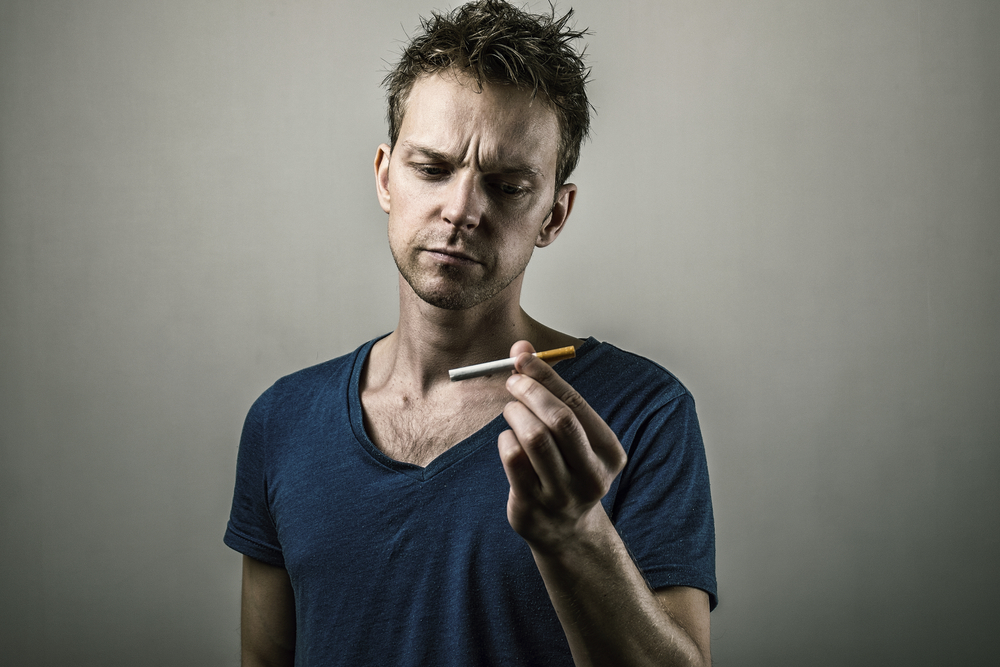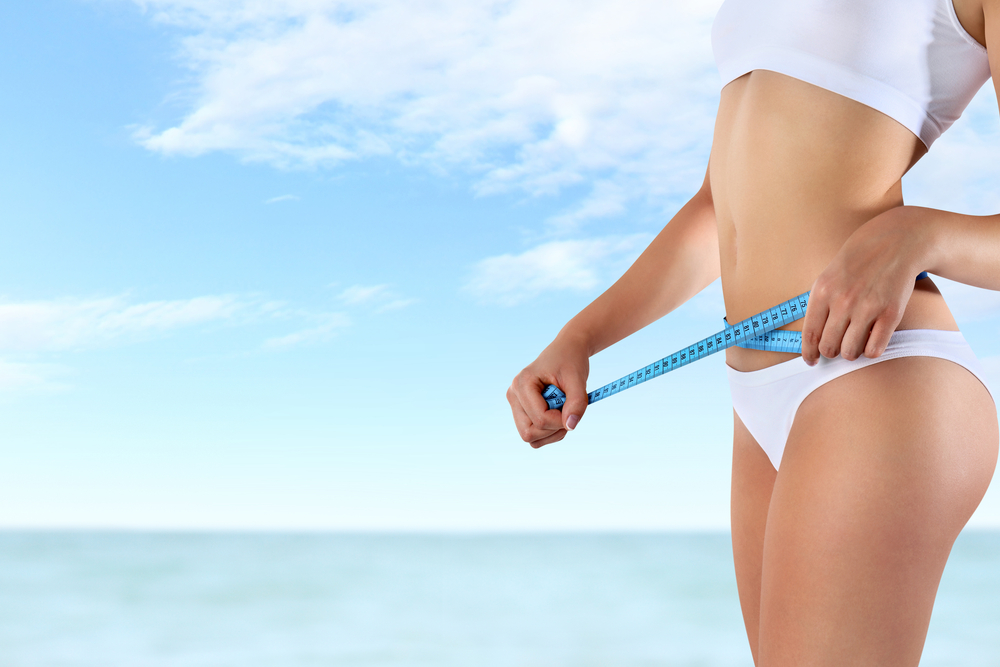The good news is that many surgical and non-invasive procedures are available today to address the age-related facial changes caused by smoking.
The number of reasons to stop smoking cigarettes is essentially infinite. Whether you pay attention to the equally infinite number of health warnings encouraging you to quit or instead preferred to pretend that they don’t exist, you already know that someday complications from smoking may well kill you. Yet you still keep puffing away.
People do quit all the time, and as hard as it may seem to believe whilst in the throes of addiction, the vast majority of ex-smokers report that they never even think about smoking after having been nicotine-free for a few months.
So quitting can be done, is done all the time, and you will eventually smoke your last cigarette – just hopefully long before they’re lowering your casket.
Maybe one reason why people tend to leave quitting for another day is because the really scary health negatives that come from the habit all seem to happen later in life: you know, the cancer, emphysema, the strokes, the heart attacks — you don’t really think about that stuff when you still feel perfectly healthy, outside of being short of breath every now and again.
It makes the health dangers seem a little more abstract, making it easier to put this nasty business of quitting on the back burner for just a little longer.
Why you should quit
However, here’s one excellent reason to quit smoking that should immediately concern you: smoking is absolutely brutal on the skin and takes a real toll on your looks — for many people, far earlier in life than they initially realized.
Just listen to what Dr. Flora Levin, a Westport, CT oculoplastic surgeon specializing in cosmetic eyelid surgery and non-surgical facial rejuvenation, has to say on the subject.
“The skin of a 40-year-old heavy smoker resembles that on a non-smoking 70-year-old. The skin is dry and coarse with deep facial wrinkles and furrows, a slack jawline, discoloration and an uneven tone. The eyelids are often baggy with creped skin. The neck is saggy with loose skin and the blood vessels are dilated and prominent. The term ‘smoker’s face’ is used to describe these facial characteristics, which are all caused by smoking.”
So unless you’ve already given up on life in general and simply don’t care anymore, you definitely do not want “smoker’s face”.
Here’s a valuable beauty tip that will do more for your looks than a thousand Botox injections could ever come close to: quit smoking.
Of course it can be hard, and we’re certainly not going to carry on here with yet more health warnings or advice about how best to quit the habit, although I can’t recommend the method that worked for me personally highly enough, which was to read Allen Carr’s incredibly effective Easyway to Quit Smoking book. As promised, it turned me into a non-smoker the instant I finished its last page and put it down for good.
But that was my business and this is your business. You’ll quit when you’re ready. Until then, let’s continue reviewing how cigarette smoke beats up on your skin, making you look ever more haggard and older with each puff.
How smoking affects your skin
Why does this particular habit, more so than other vices, age people so dramatically? I asked board-certified dermatologist Dr. Paul S. Yamauchi, of Santa Monica, to describe this process.
Yamauchi explained how the skin and hair on our bodies are already regularly exposed to numerous environmental toxious agents, not only smoke from tobacco. Tobacco smoke, however, consists of thousands of chemicals and carcinogens that damage the skin, and beyond its known links to cancer, lung, and heart disease, is associated with:
- Premature skin aging
- Slower wound healing
- Increased rates of infections
There’s also a general consensus that smokers experience higher rates of certain skin disorders than non-smokers, such as:
- Skin cancers
- Psoriasis
- Hidradenitis suppurativa (chronic boils in the armpits and groin area)
- Lupus
- Acne
Yamauchi also points out that these conditions are actually harder to treat for smokers than non-smokers, and highlights some of the changes that result from smoking:
- Yellowing of fingers and fingernails
- Discolored teeth
- Discolored tongue
- Wrinkles and furrows
- Bags under the eyes
- Slack in the jawline
- Dry and coarse skin
Unsurprisingly, Levin also agrees that “the single best thing a smoker can do before, during, or after any aesthetic procedure is to stop smoking. It’s certainly the most cost-effective procedure,” she quips.
However, Levin also acknowledges that for those who simply can’t find it within themselves to quit just yet, “many surgical and non-surgical procedures are available today to address age-related facial changes.”
Of course, the fact that quitting is the best thing a person can do to ward off the visual effects of smoking hardly comes as news to anyone. But why exactly? What is in cigarette smoke that’s responsible for all this damage to the skin? And is there any relation to why so many cosmetic surgery procedures demand patients stop smoking in advance of their operations?
Levin says that “the number one reason for this is that successful plastic surgery is largely dependent on a healthy blood supply flowing to the operated tissues, and cigarette smoke is extremely hazardous to blood circulation. Plus, nicotine slows down healing.”
Additionally, smokers need more anaesthesia and pain medication than non-smokers. “All reasons why, when considering surgery, it is best to stop smoking, if not permanently, then at least before surgery and throughout the recovery phase to improve wound healing and avoid potential complications that can adversely affect the aesthetic results,” says Levin.
The damage smoking does to skin basically happens through suffocation. Just one cigarette constricts blood flow for as long as 90 minutes. Consequently, with that one butt you can essentially starve your skin of oxygen for as long as an hour and a half. That’s a long time, and what happens as a result is you inhibit circulation and break down collagen and elastin – all key components for healthy, younger looking skin.
Plus, since the blood isn’t flowing as it should you become more prone to broken capillaries and veins, which in turn causes dark scarring on the face.
Finally, while you’ve probably never given it that much thought, smoking involves a lot of repetitive motions. You’re pursing your lips and furrowing your brow with every puff you take, and these repetitive motions create their own lines and wrinkles on your face.
As you might have noticed with the vast majority of middle-aged moderate to heavy smokers, they tend to show deep lines around their mouths and vertical lines in between their eyebrows. Not too mention the inescapable nasolabial folds (those lines that go down from the nose to the mouth) that develop.
Reversing skin damage caused by smoking
The good news, according to Levin, “is that many procedures are available today to address age-related facial changes. Numerous surgical and non-surgical rejuvenation options still apply, even if you are a smoker.”
Levin notes that one area particularly vulnerable to the aging affects of smoking is around the eyes, closely followed by the neck. Unfortunately, however, improving either of these areas almost always entails surgery, and because they are so readily visible, these are often among the most important areas to treat.
Levin remarks how she “often tells patients that the eyelids and the neck are ‘cousins’ in that there are very limited non-surgical options for excess skin and saggy lids and neck, two areas of the face most deeply affected by smoking.”
The reason for this, explains Levin, is that since “the eyelid skin is thin and often the first to show signs of aging, it is particularly vulnerable to the negative effects of smoking. Rejuvenation of the peri-ocular area may include endoscopic brow lifting, upper blepharoplasty to remove the excess eyelid skin, and lower blepharoplasty to improve the appearance of bags, dark circles, and loose skin (concentrated under the eyes).”
According to Levin, surgical procedures alone aren’t always enough to treat the full extent of the damage done to these areas from smoking.
“Surgical eyelid procedures might need to be combined with laser skin resurfacing to further improve the appearance of fine lines,” says Levin. “While for other facial areas, dermal fillers, neurotoxins [Botox and Dysport] and laser skin resurfacing can help improve folds, wrinkles, skin tone and discoloration. Laser procedures are also used to improve the appearance of dilated and broken capillaries.”
Essentially, as Levin explains, “multiple modalities are often necessary to achieve the best results.”
Of course, none of these procedures come cheap, making Levin’s assertion about quitting the habit altogether being the most cost-effective option that much more prescient. Still, even if cosmetic procedures to hide the ravages of long-term smoking can be costly, while of course only addressing the most superficial health negatives that come with the habit, it’s at least comforting to know treatments do exist, and, for the most part, will do a pretty good job of masking the damage all those years of smoking have done to your looks.
So if this is a cosmetic issue of concern to you, the most helpful, practical thing to do is, yes, you guessed it: quit. Quit and then wait a couple of months. There is absolutely no question that your face will look more youthful and considerably healthier for doing so.
Once you feel confident that you won’t ever be going back to the habit, evaluate the appearance of your skin at that time. You might very well decide that you don’t really need to engage in any cosmetic procedures to repair your facial skin anymore anyway.
However, if the damage is so severe that the act of quitting alone won’t reverse it to the extent you’d like to see, you can be confident that with a few dollars and an expert cosmetic doctor at your side, you’ll still be able to get that natural healthy glow back. Courtesy of medical science, it really isn’t too late for that. The results gained from these procedures will even last significantly longer if you’ve quit the habit for good.
Now let’s talk about all that damage smoking is doing to your lungs, heart, circulation…
Actually, maybe we don’t really want to think about that too much right now, huh? Perhaps that’s a subject better left for another day. Like tomorrow, when you finally sit down and quit, right?








